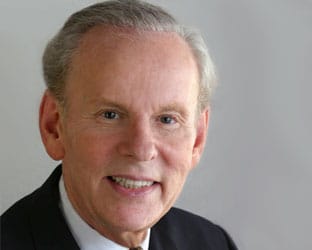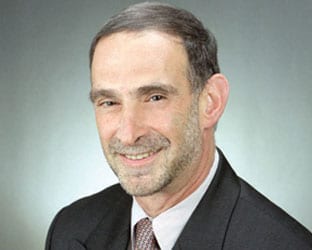

 by Erwin G. Krasnow, Doug Ferber & Bishop Cheen
by Erwin G. Krasnow, Doug Ferber & Bishop Cheen
Deal flow speaks volumes about the entrepreneurial appetite for broadcast properties, and with the FCC’s broadcast incentive auction drawing closer, Garvey Schubert Barer attorney Erwin G. Krasnow ([email protected]), DEFcom Advisors CEO Doug Ferber ([email protected]) and SNL Kagan Analyst/Consultant Bishop Cheen ([email protected]) have written an extensive commentary de-bunking common auction myths. Our fourth installment discussed the myth that broadcast cash flow is easy to calculate.
Here, the trio discuss the myth that cash flow multiples are the perfect yardstick.
MYTH No. 5: Cash Flow Multiples: The Perfect Yardstick
Much like Gus Portokalos, the father in “My Big Fat Greek Wedding,” who invited friends and family members to “say any word and I’ll tell you how the root of a word is Greek,” many buyers regard cash flow multiples both as the starting and the end point of station value. But cash flow multiples do not account for structural differences within a market, potential new competition (e.g., the construction of new stations), recent management changes to a sleepy competitor, market status (e.g., fast-growing or mature), and the impact of non-broadcast media, such as cable television, newspapers, billboards, the Internet, streaming, portable digital content delivery devices (e.g., video recorders, iPods, mobile video-on-demand), or emerging technologies.
Also, depending on market conditions at the time of the sale and the ability of the seller to command a premium, the sales price can be based on trailing cash flow (the past 12 months or longer), projected cash flow, or a multiple of cash flow as of the closing of the transaction. Multiples vary based on the type of station (AM, FM, TV, Class A, LPTV) and the size of the market.
Cash flow multiples are a handy way to gauge investor sentiment and the availability of capital to support the sentiment. Granted, the cost of capital has a lot to do with multiples as well. Over the long haul, a rational relationship has been demonstrated between cash flow multiples and the cost of capital, as a reciprocal of each other on a scale of 100. Thus, when the cost of capital is 12%, multiples are 8-ish (12 times 8 = 96). Likewise, when capital is cheap—such as 8% overall—multiples are 12-ish.
During the past 10 years, cash flow multiples for radio stations have been dramatically contracted from as high as 14x in 2005 to less than 7x currently. That’s because overall, the mature radio station industry has not been generating ad revenue growth, while digital and Internet based competition has soared. In TV, multiples have also contracted at about the same magnitude—from roughly 13x in 2005 to 8x in 2015.
TV, however, has had a perception advantage over radio in terms of expectations for forward revenue growth. That’s because TV tends to be more cyclical with political and Olympic ad spending growing overall during each wave. TV also has been blessed by a relatively new and high margin revenue stream via retransmission consent fees paid by cable, satellite and telco multichannel providers and revenues derived from leasing sub-channels. In contrast, radio stations still largely depend on general ad revenue for their economics, albeit with noticeable upticks during election cycles.
It is not unusual to see two different cash flow multiples touted for the same deal. And both may be appropriately expressed even though they may differ by a multiple or two (… or more!). There’s a “seller’s multiple” that is usually at the higher end of the comparable cash flow multiple range and based on the station’s trailing cash flow. And there’s a “buyer’s multiple” often at the lower end of the comparable range and usually based on the anticipated forward cash flow after the buyer cuts some costs and makes some adjustments to enhance revenues.
Also, the cash flow multiples cited in the trade press are usually unreliable because you rarely know what all the components are in a deal and most people quoting them only look at the surface. Did the buyer get to keep the receivables? How much of the existing debt did the buyer take on? Was there a tax consideration that drove the deal? Was there a “consulting” arrangement for the seller that isn’t being considered? Did the seller agree to hold paper? Multiples are often higher when the seller provides buyer with financing.
Rather than relying solely on a station’s trailing cash flow, experienced buyers value assets based on an average of three benchmark methodologies: “comparables,” revenue multiples, and discounted cash flow analysis. A discounted cash flow (DCF) analysis projects the performance of a station, excluding depreciation and debt service, over a set number of future years (generally at least seven to ten years), then discounts the stream of cash flow including those of the terminal (end value) of the asset. The cash flows are discounted using a discount rate that reflects the cost of capital and the buyer’s capital structure (i.e., percentage of debt vs. equity). This rigorous analysis is a standard MBA approach for valuing the streams of future profits for any type of business. And it may be required by investors and lenders to be performed before a deal is funded.
One of the flaws of a DCF analysis is the difficulty of predicting revenues and cash flow, especially in the middle and long term. Ratings, programming, the local economy and competition in the market often fluctuate. In view of the difficulties of predicting cash flow, DCF should not be the only method of establishing the purchase price.
After determining cash flow and the multiple to be paid, basic tenets of supply and demand may wipe out all logic as it relates to the perceived value and potential selling price of a deal. This “wild card” is the available pool of buyers willing and able to fund and close the transaction. A robust buyer pool (high demand) can produce dramatic upward pressure on pricing producing cash flow multiples that are higher than “market.” Conversely a shallow buyer pool (low demand) can send pricing into a free fall versus the expectations of sellers and buyers before the marketing process begins.
The myth that seller’s revenues and BCF predict future performance will be covered in the next installment.
Erwin Krasnow co-chairs the Communications Group of Garvey Schubert Barer, is Washington counsel to the Media Financial Management Association and former NAB general counsel. He has represented sellers and buyers of broadcasting, cable, tower and telecommunications properties in transactions totaling in excess of $21 billion. Reach him at: [email protected]/
Doug Ferber began his career as an entry level sales trainee for Bonneville International Corporation in 1984. After milestone assignments with Capital Cities/ABC and Interep National Radio Sales, Doug has brokered more than 50 transactions valued at over $400,000,000. He founded DEFcom Advisors, LLC, a Media Financial Consultancy Company, in 2009. Reach him at: [email protected]/
Bishop Cheen writes the “CAPITAL Letters” blog for SNL Kagan, is a consultant for Kagan Media Appraisals on valuations, expert witness and other financially focused assignments. He also teaches seminars and online courses (for the SNL Knowledge Center) on trends, economics, and valuations in the media/telecom industries. Bishop retired from Wells Fargo in 2012 as a managing director and senior analyst. Reach him at: [email protected]/





